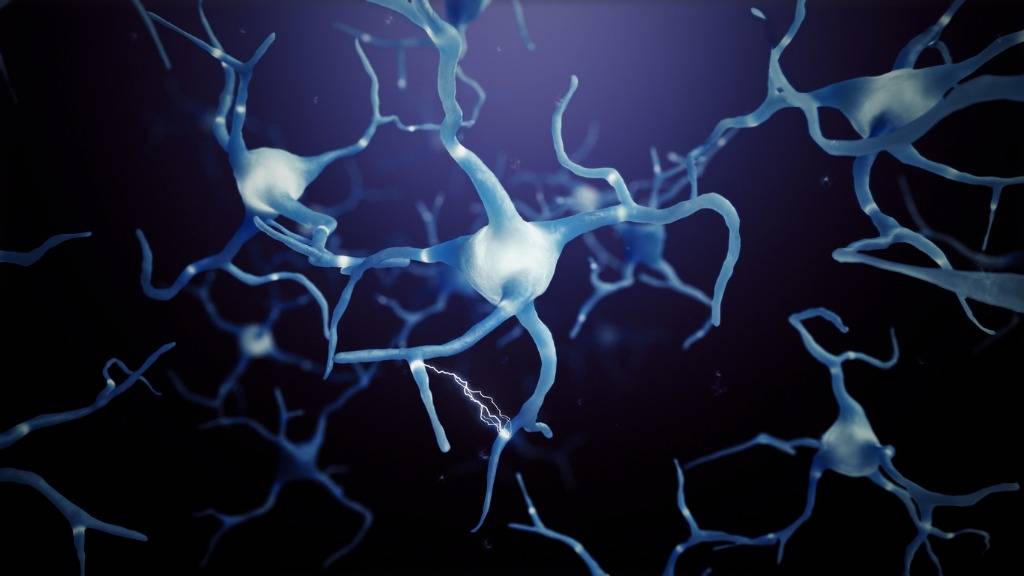The International Association for the Study of Pain (IASP) defines pain as an “unpleasant sensory and emotional experience associated with, or resembling that associated with, actual or potential tissue damage,” (Bonezzi et al, 2020). Pain is considered chronic if it lasts or recurs over at least 3 months. Identifying the points in the body where pain impulses are generated and classifying types of pain that patients experience can help with diagnosis and appropriate treatment (Bonezzi et al, 2020). Pain can be generally labeled by its biological mechanism with three classifiers: neuropathic, nociceptive and nociplastic pain (Bonezzi et al, 2020).
Neuropathic pain is related to damage or dysfunction in the peripheral or central nervous system (Bonezzi et al, 2020). Abnormal nerve impulses cause the sensation of pain, the positive symptom of neuropathy. Neuropathic pain also causes negative symptoms: a deficit in ordinary sensation related to the damage (Bonezzi et al, 2020). The pain is specifically located in the area of the body innervated by the damaged section of the nervous system and can either be localized or generalized within that area. If pain is felt in a place that is not innervated by the damaged nerve, it is considered “referred pain”; an example of this is how someone’s arm may hurt during a heart attack (Bonezzi et al, 2020). Common forms of neuropathic pain include diabetic peripheral neuropathy, HIV-associated neuropathy and postherpetic neuralgia (Bonezzi et al, 2020).
Neuropathic pain can be associated with hyperalgesia, in which pain receptors overreact to painful stimuli, and allodynia, in which pain receptors react to non-painful stimuli. Allodynia, for example, can cause someone to experience pain with light touch (Bonezzi et al, 2020). The mechanism for these symptoms related to neuropathic pain is complex and has to do with modified electrical signaling and central sensitization, in which neurons in the central nervous system become more sensitive to stimuli. Allodynia related to neuropathic pain is often specified as mechanical or dynamic allodynia (Bonezzi et al, 2020).
Nociceptive pain is related to damage or the threat of damage to other non-neural tissues. It can be somatic, originating in peripheral tissues like skin or muscle, or visceral, originating in the abdomen or other organs. It is considered chronic when the pain lasts beyond the usual healing time for the injured tissue (Bonezzi et al, 2020). Nociceptive pain can also be associated with hyperalgesia and allodynia, though through different mechanisms than neuropathic pain. Allodynia related to nociceptive pain is often specified as primary allodynia, where there is peripheral sensitization of the pain receptors at the same site where the painful impulses are being generated. If the allodynia spreads beyond the original site, it is considered to be secondary allodynia, and is related to the spinal cord receptor field of innervation (Bonezzi et al, 2020).
Nociplastic pain is the newest accepted label among pain classifiers. In nociplastic pain, there is an alteration in pain perception; however, there is no actual or threatened tissue damage and no damage or disease of the nervous system (Bonezzi et al, 2020). Nociplastic pain is associated with central sensitization and can also be associated with psychological distress. Nociplastic pain is typically seen with conditions such as fibromyalgia, irritable bowel syndrome and chronic nonspecific back pain (Bonezzi et al, 2020). It is common to experience nociplastic pain along with nociceptive pain. Nociceptive pain may in fact be a risk factor for developing nociplastic pain, as the hypersensitization experienced with nociceptive pain could cause long-term changes in pain signaling (Kosek et al, 2021).
Beyond the three main accepted categories of neuropathic, nociceptive and nociplastic pain, there have been other attempts to define pain types. Mixed pain is one example of this. A recent attempt to create a clinical definition of mixed pain describes it as a complex overlapping of neuropathic, nociceptive or nociplastic pain in any combination causing pain simultaneously in the same area of the body (Freynhagen et al, 2019). It also states that one of the mechanisms may be more predominant at any point of time (Freynhagen et al, 2019). Finally, there is the catch-all classification “pain of unknown origin.” This category is used for patients whose pain does not fit with any of the known mechanisms and is only used when all other possible diagnoses have been excluded (Kosek et al, 2021).
References
Bonezzi C, Fornasari D, Cricelli C, Magni A, Ventriglia G. Not All Pain is Created Equal: Basic Definitions and Diagnostic Work-Up. Pain Ther. 2020;9(Suppl 1):1-15. doi:10.1007/s40122-020-00217-w
Freynhagen R, Parada HA, Calderon-Ospina CA, et al. Current understanding of the mixed pain concept: a brief narrative review. Curr Med Res Opin. 2019;35(6):1011-1018. doi:10.1080/03007995.2018.1552042
Kosek E, Clauw D, Nijs J, Baron R, Gilron I, Harris RE, Mico J-A, Rice ASC., Sterling M. Chronic nociplastic pain affecting the musculoskeletal system: clinical criteria and grading system, PAIN. Nov 2021; Vol. 162; Iss 11: p 2629-2634. doi:10.1097/j.pain.0000000000002324
